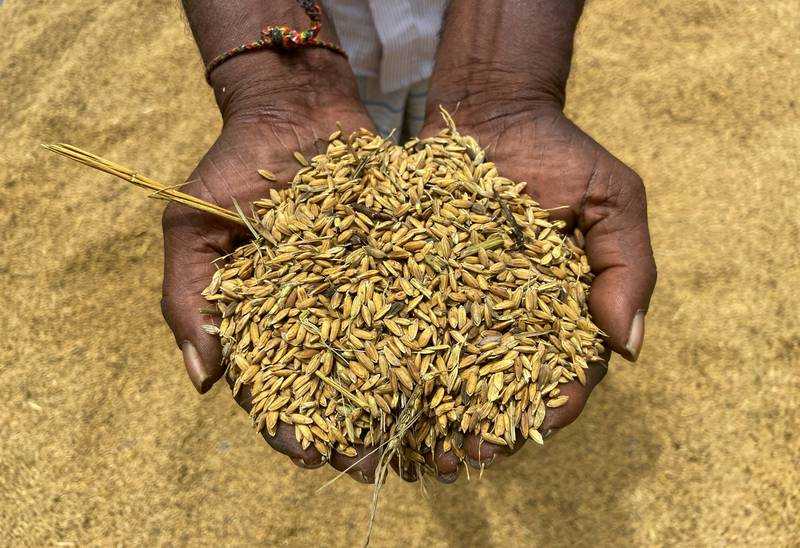Major food crisis threatens 35 countries amid rising inflation, IIF says

Collected Image
About 35 countries around the world are experiencing a major food crisis, of which 16 also face severe debt problems as inflation remains high and fertilizer costs climb to their highest level in over a decade, according to the Institute of International Finance.
Twenty-one nations are facing “chronic food insecurity crises” that reflect structural challenges dating back to well before the beginning of the Russia-Ukraine conflict, which severely disrupted supply chains and deepened the global food crisis, the IIF said in its latest report.
Repercussions could be even more pronounced in low-income and lower-middle-income countries that have “limited fiscal space to address rising food prices” and are already facing high debt levels.
“Most of these fragile countries have accumulated a significant amount of domestic and external debt over the past decade and are persistently running large twin deficits,” said Emre Tiftik, a director at the IIF, and Paul Della Guardia, an economist at the institute.
The total external debt of these 16 countries has more than doubled since 2010. Public and publicly-guaranteed debt accounts for more than 80 percent of long-term external liabilities, with multilateral lenders including the International Monetary Fund representing 43 percent of the total.
China stands out as the largest single official external creditor, accounting for over 18 percent of outstanding public debt — a significant rise from the 8 percent level in 2010, the IIF said.
Global food prices have been on the rise since 2020 as Covid-19 severely affected agriculture sectors and disrupted global supply chains, with a steady rise in fertilizer costs. Russia’s war in Ukraine, which started on February 24, exacerbated the commodities super cycle.
Before Russia’s military offensive, the two countries collectively supplied about 30 percent of the world's traded wheat and 15 per cent of corn exports. Prices of grains, oil and other food commodities have since risen sharply, severely affecting lower and lower-middle-income countries that were already struggling to kick-start their pandemic-battered economies.
Nations dependent on food imports, especially in the Middle East and Africa, are facing inflation driven by food and energy prices, which is threatening growth momentum.
Lebanon is the country worst hit by the food inflation crisis, driven by the war in Ukraine, the World Bank said in August Nominal food inflation in Lebanon has hit more than 330 per cent, while real food inflation — which refers to food inflation minus overall inflation — rose to 122 per cent, the World Bank said in a report last month.
Headline inflation in Lebanon rose to 168 per cent in July from the same month a year earlier, according to Lebanon's Central Administration of Statistics' Consumer Price Index. The index increased by 7.4 per cent from June 2022.
The country has the fourth-highest debt-to-GDP ratio in the world, and the World Bank says its economic crisis is among the three most severe since the mid-19th century. Lebanon is followed by Zimbabwe, Venezuela, Turkey and Iran in terms of countries with worst food-driven inflation.
Although mounting global recession fears and the partial resumption of vital grain exports from Ukrainian ports have somewhat reduced food price pressures, global food prices remain high, the IIF said.
“This has fuelled ongoing concerns about food security, especially in low-income countries,” said the Washington-based institute. “The number of people facing acute food insecurity could increase by over 15 per cent to nearly 325 million in 2022 due to the war in Ukraine,” the IIF said, citing the World Food Programme data.
The agriculture sector’s reliance on energy-intensive inputs such as fertiliser is also a contributing factor in the rise in food prices. Since mid-2010, fertiliser prices have more than tripled, in tandem with a rise in hydrocarbons prices. “Fertilisers and energy are critical for the crop cycle, so they are building on each other and creating a food crisis that will last at least for months and probably into next year,” World Bank president David Malpass said in April.
Source: https://www.thenationalnews.com
Tags :
Previous Story
- Gulf central banks raise interest rates after Fed...
- Inflation will not fall to 2% target for...
- Global M&A activity under pressure as companies shun...
- Powell says the Fed will not hesitate to...
- Soaring inflation leads emerging markets into stagflation, IIF...
- Why surging inflation could hamper India’s economic recovery
- Aluminium users cite weak operating conditions in Q1...
- Turkey's inflation set to hit new 20-year high,...